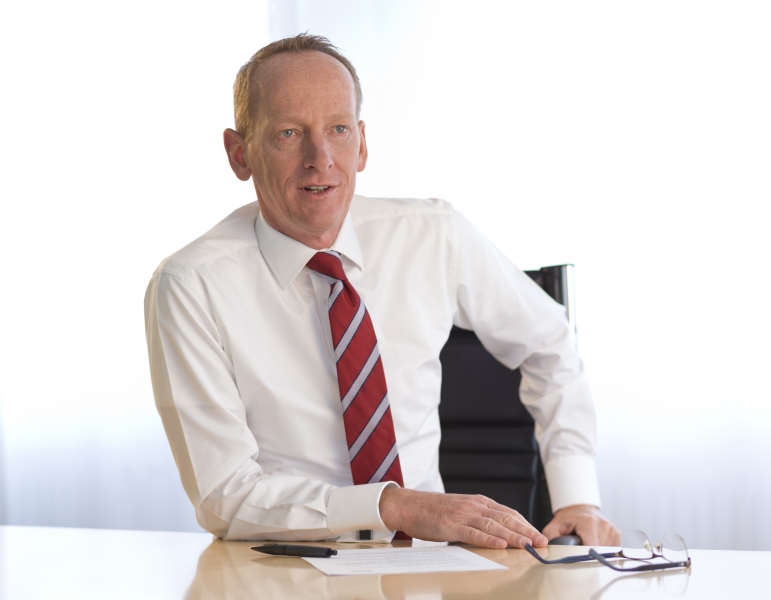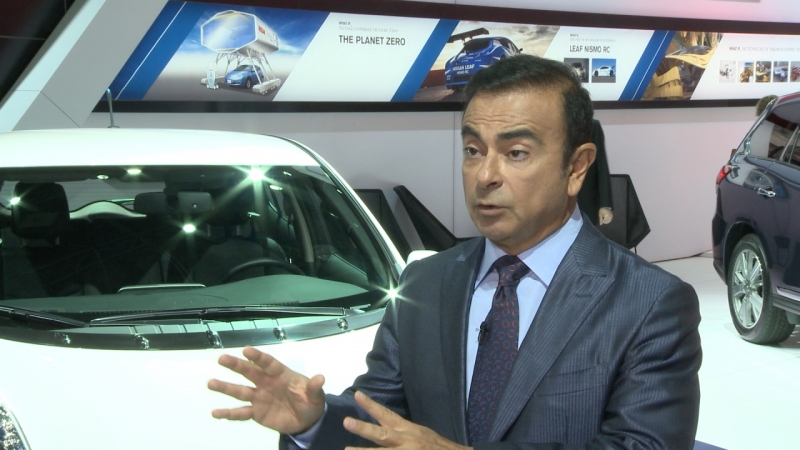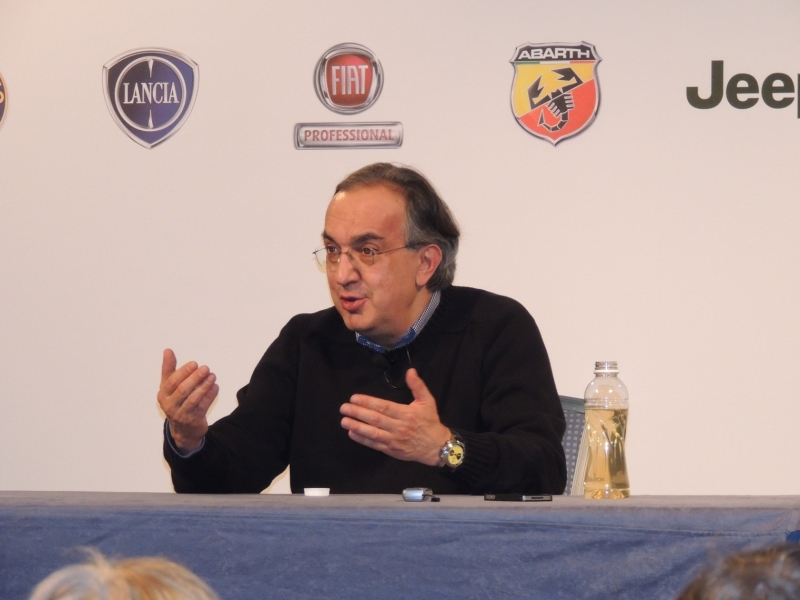In the wake of the global financial crisis, major markets such as China and North America enjoy busy assembly plants bursting at the seams with new products and expectations for another sales surge in 2015.
But Western Europe, which has endured a new-vehicle sales plunge of 24% since 2007, remains hidebound by the setback and it is unclear when its fortunes may return.
“Europe is not growing how we thought it would at the beginning of the year,” Adam Opel CEO Karl-Thomas Neumann tells WardsAuto. “It’s a picture where some markets do pretty good, but there are also very difficult situations.”
Fiat Chrysler CEO Sergio Marchionne takes more dim view: “I’ve never been a firm believer in the strength of the European recovery.”
A year that began with great optimism soured as months wore on, with sales deflating from a relatively robust 1.6 million units in March, according to WardsAuto data, to a meager 739,263 in August.
Automakers would have needed to sell a healthy 1.5 million units in November and December to match 2014 sales totals. But even a 13 million-unit year would be a far cry from the heady days of 17 million annually before the global financial crisis hit.
“The growth has moderated,” says former Ford of Europe chief Stephen Odell, who now leads the automaker’s global marketing.
The region’s ailments are many, leaving most outlooks for 2015 calling for flat year-over-year sales. Production also will remain relatively static, edging down to 20.26 million units from 20.32 million year-ago, according to a WardsAuto forecast.
Growth in countries such as the U.K. and Germany are offset by contraction in others such as Turkey and, most significantly, Russia.
Once coveted as the next emerging market to see a boom in new-vehicle sales, Russia was on track in the closing days of 2014 to post a second consecutive annual decline in sales.
“The big uncertainty is the Eastern part of the market,” says Didier Leroy, president and CEO-Toyota Europe.
Western European unemployment remains at epidemic levels. Interest rates are climbing and in some countries there is talk of additional austerity plans. And while many vehicles in operation are due for replacement, too many Europeans simply do not see the value in a new car.
In addition, overcapacity continues to be an issue for automakers. It has made for a buyer’s market where discounting undermines profitability.
“Everyone is just trying to maintain share and consequently it is a market driven by incentives and discounting,” says Tim Urquhart, a senior analyst at IHS in London. “It is a very fine balancing act.”
Blame the Economy
The biggest question on the minds of industry executives this year is the pace of economic expansion, which has struggled to gain momentum since the financial crisis. As 2014 wound down, the European Commission projected real GDP growth to reach 1.3% in the European Union and 0.8% in the eurozone.
U.S. GDP, by comparison, grew at a record clip of 5% in the third quarter.
The EC expects GDP to rise slowly over the course of 2015, reaching 1.5% and 1.1%, respectively, on the strength of improving foreign and domestic demand.
The uptick hinges greatly on a planned €315 billion ($385 billion) investment by the commission into the private sector. About €21 billion ($25.7 billion) is earmarked for infrastructure improvements, and the outlay is expected to create 13 million jobs.
But most of the funds are anticipated to come from private backers rather than the commission itself, fueling skepticism it will succeed.

“The economic and employment situation is not improving fast enough,” says Jyrki Katainen, vice president-Jobs, Growth, Investment and Competitiveness at the Brussels-based commission. “Accelerating investment is the linchpin of economic recovery.”
An annual Autumn Economic Forecast from the commission characterizes the EU economic recovery as “fragile” and “lacking momentum.” Consumer confidence is down amid geopolitical fears and doubts over the health of the global economy.
EU unemployment sat at a near-record 11.5% as 2014 came to a close. The commission expects some job creation over the next 12 months, reducing joblessness to 9.5%.
U.S. unemployment, comparatively, fell to 5.8% in November, as the percentage of job seekers continued to dwindle from the 10% range at the height of the crisis.
The good news is that EU banks are gaining surer footing. Last year, EU bank capitalization rose by €57 billion ($70 billion), increasing the capital funding of the institutions to €257 billion ($314 billion) since 2008. Shaky banks contributed greatly to the economic downturn.
At the same time, however, the European Central Bank in November warned of pockets of weak demand for borrowing and increasingly rigid credit terms, which could affect car buyers seeking financing. Interest rates remain low, near zero, but the ECB is expected to raise rates next year and that could put additional pressure on customers.
Another item dampening the European recovery: inflation. But instead of it being too high, it’s too low. In fact, inflation in December approached zero in the eurozone, which means industries will find it difficult to raise prices to cover the growing cost building and selling items, and consequently they would likely pull back on hiring.
The ECB intends to remedy that with an asset-buying program, reportedly similar to the one conducted in the U.S. by the Federal Reserve. But no action has been taken and there are fears low inflation could result in another financial crisis.
On the political front, it should be a stable year in the region after Angela Merkel won re-election as chancellor of Germany, the largest new-car market.
However, there is talk of additional austerity programs in the U.K., a bright spot for sales in the region in 2014, which could affect consumer confidence. And in Spain, seven consecutive PIVE new-car subsidy programs could result in blowback this year if an eighth one is not enacted.
The need for Europeans to replace old cars with new ones might be overstated, Urquhart says.
“Vehicle age is actually a bit of negative, due to higher-quality vehicles,” he adds. “People just don’t see the value in paying 100% more for 20% more vehicle.”
The Russian Implosion
And then there is Russia. Just two years ago, the natural-resources-rich country was poised for a breakout in new-vehicle sales and expected to perhaps overtake Germany as the broader European region’s top market later in the decade.
But the summer’s crisis in Ukraine brought economic sanctions from the West, and Moscow countered in September by scaling back government purchases of new vehicles and threatened to go so far as to ban imports from the U.S., Japan and the EU.
The collapse of the ruble due to tumbling oil prices in December made the saber-rattling moot, as General Motors and Jaguar Land Rover suspended sales there.
“In view of the volatility of the ruble exchange rate and with the aim to manage its business risk, GM Russia has decided to temporarily suspend wholesaling of vehicles to its dealers in Russia as of Dec. 16,” the automaker said in a statement.

Renault-Nissan, which holds a majority stake in Russian automaker AvtoVAZ, curbed the sale of some models. Renault-Nissan CEO Carlos Ghosn called the ruble’s collapse “a bloodbath” for automakers. BMW and Volkswagen were said to be redirecting sales to healthier markets.
As of mid-December, the ruble had lost half of its value against the U.S. dollar. Through October, new-vehicle sales totaled just 2.1 million units, 12.7% off last year’s also dismal pace. A WardsAuto forecast called for Russian sales to finish 2014 at 2.3 million units, down 17.5% vs. year-ago, before the actions by GM and others.
“Russia is a headache, but it’s a headache for everyone,” says Tina Mueller, chief marketing officer at Opel.
It remains unclear when sales might regain a note of normalcy for automakers in the country, where executive decisions were being made on a week-to-week basis.
“There is little point in manufacturing and importing vehicles that are going to lose money, simply because the ruble’s ongoing slide is so dramatic,” Urquhart of IHS says. “And that’s even if buyers can be found for these vehicles, given the corresponding decline in the passenger-car market.”
Build Them Anyway
Whether the modest economic growth will be enough to put Europeans in buying mood remains to be seen, but the new models will be there to greet them if they do.
Opel, which is receiving a €4 billion ($5 billion) capital injection from parent General Motors to get the German automaker back to profitability, begins selling the redesigned Corsa small car this year. Although not fully redone, it received major exterior and interior styling upgrades, advanced infotainment connectivity and a new powertrain lineup.
“The new Corsa must be a success,” Opel’s Neumann says.
Another important small car, the Karl, comes in the summer, and strong early sales of the Mokka small CUV are expected to continue.
Fiat Chrysler will roll out the Fiat 500X, a compact CUV that shares its platform with the Jeep Renegade, which also hits the European market this year. At the other end of the market, the Alfa Romeo Giulia greets luxury-performance buyers late in the year.

Ford launches the redesigned Ford S-Max and Galaxy MPVs in 2015, now available with a high-efficiency 2.0L turbocharged gasoline engine. Ford’s rollout of the new Mondeo will pick up pace as the year unfolds, and the range includes the first hybrid both built and sold in Europe.
Deliveries of the new Focus, the best-selling nameplate in the world, also got under way as 2014 drew to a close and the Mustang will start trickling into the market by the end of the year for the first time ever.
Other key models include the Audi TT, BMW 2-Series, Honda HR-V, Kia Sorento, Land Rover Discovery Sport and the Volkswagen Golf AllTrack. VW Group also launches a refreshed Touran MPV and Audi Q7.
The hottest segment will continue to be compact CUV/SUVs, which doubled sales in 2013. IHS expects the group will close 2014 with another 40% of growth.
Overcapacity will continue to affect automakers in Western Europe this year, despite the closure of two major manufacturing sites. Opel’s former flagship assembly plant in Bochum, Germany, built its final car in December after 52 years of output.
A 50-year-old Ford assembly site in Genk, Belgium, ended production in December, as well.
The actions by GM and Ford trim some capacity from the system, but executives agree further reductions must be taken.
“Overcapacity is a huge problem,” Neumann says.
For Fiat Chrysler’s part, Marchionne adds, “We will have no open, unexploited production capacity that will not find a home by the end of 2018.” But he admits to “lack of a will and lack of a vision on the European side to see a fundamental structural reform of the industry in terms of taking out capacity.”
Not everyone will feel pain in 2015, however. With automakers asking more than ever for innovations to differentiate their products and meet tightening safety and carbon-dioxide emissions regulations, parts suppliers in many ways are healthier than their customers, Faurecia Chairman and CEO Yann Delabriere confesses.
“The Tier One industry has made great progress in adjusting its cost base, moving to the best landed-cost setup in manufacturing and engineering, and our (customers) are expecting us to contribute to their global platform strategy. Well, that’s a pretty good environment,” he says.





